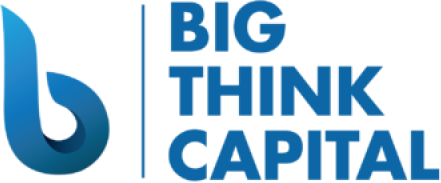Navigating Fed Interest Rate Hikes: The Definitive Guide for Small Businesses to Optimize Their Funding Strategies in 2025
Estimated reading time: 7 minutes
- Understanding the current economic landscape and its impact on borrowing costs.
- Evaluating funding strategies tailored for high interest rate environments.
- Importance of cash flow management and contingency planning.
Table of Contents
- Understanding the Federal Reserve’s Role
- Impact on Small Businesses
- Optimizing Your Funding Strategy
- Practical Insights for Business Owners
- The Importance of Cash Flow Management
- Preparing for Economic Volatility
- Conclusion
Understanding the Federal Reserve’s Role
The Federal Reserve, often referred to as the Fed, influences the economy primarily through monetary policy, particularly by setting interest rates. In recent years, the Fed has raised interest rates to combat inflation, making borrowing more expensive. According to the Federal Reserve Economic Data (FRED), the federal funds rate reached approximately 5.4% in early 2025, a marked increase from earlier years.
Impact on Small Businesses
Higher interest rates generally result in:
- Increased loan costs
- Slower consumer spending
- Heightened market volatility
For small businesses, these factors can lead to tighter cash flow and the need for strategic financial planning. Making the right choices now can position your business for sustained growth despite challenging conditions.
Optimizing Your Funding Strategy
In a high interest rate environment, it is vital for small businesses to adopt effective funding strategies. Here are several approaches you can take:
Evaluate Existing Debt
Before seeking new financing, review your current debt situation. Consider refinancing options if you are holding high-interest loans. Refinancing to a fixed rate can provide predictability in a fluctuating market.
Explore Alternative Lending Options
Small businesses often find traditional bank loans prohibitively expensive during periods of high interest. Alternative lending options, such as working capital advances or merchant cash advances, may provide a faster, more accessible avenue for funding.
- Working Capital Advances: Similar to a loan, this option allows you to access cash based on future credit card sales. This can be beneficial for businesses with fluctuating income.
- Merchant Cash Advances (MCA): Unlike traditional loans, MCAs provide quick access to capital but can come with high fees. They are ideal for businesses that have steady credit card sales and need immediate funding.
Leverage SBA Loans
SBA loans typically offer lower interest rates compared to conventional lending options. According to the U.S. Small Business Administration, the maximum interest rate on SBA loans is usually capped, making them a favorable choice. In 2025, the effective rates on SBA loans remain competitive, making them attractive despite rising general interest rates.
Key benefits of SBA loans include:
- Longer repayment terms
- Lower down payment requirements
- Flexible use of funds
Getting pre-approved for an SBA loan can position your business favorably for future opportunities.
Practical Insights for Business Owners
Here are three actionable insights to optimize your funding strategies in 2025:
- Stay Informed on Federal Rate Changes: Keep an eye on the Fed’s monetary policy announcements. This will help you anticipate potential loan cost increases and act swiftly to secure financing before rates rise further.
- Build a Financial Cushion: Increased costs can strain cash flow. Building a financial reserve can provide essential support, allowing you to make strategic investments or navigate unexpected expenses.
- Evaluate Your Credit Profile: Lenders place great emphasis on creditworthiness, especially in a high interest environment. Regularly review your credit report and take proactive steps to improve your credit score. This could include paying off debts, disputing inaccuracies, or increasing your credit lines.
The Importance of Cash Flow Management
Cash flow management becomes even more crucial during periods of high interest rates. Ensuring that you have a clear understanding of your revenue cycles and expenses can help prevent financial strain. Utilize budgeting tools and software to visualize your cash flow and make informed budgeting decisions.
Preparing for Economic Volatility
The economic landscape in 2025 remains unpredictable, with experts forecasting continued fluctuations in interest rates and consumer spending habits. As a small business owner, adopting a proactive approach is vital. Creating contingency plans for potential economic downturns will safeguard your operations.
Conclusion
As we navigate the complexities introduced by the Fed’s interest rate hikes in 2025, small businesses must remain agile and informed. By evaluating smart funding options such as working capital advances, SBA loans, and carefully managing your existing debt, you can optimize your financial strategy.
Do not let rising interest rates deter you from seizing growth opportunities. Whether you are looking to finance equipment, expand your operations, or simply maintain healthy cash flow, understanding these dynamics is key.
For tailored advice and expert support in securing the best funding options for your business, explore our offerings at Big Think Capital. Visit us at bigthinkcapital.com or connect with one of our funding experts today. Your business’s future depends on making informed financial decisions now.
FAQ
What is the current federal funds rate?
As of early 2025, the federal funds rate is approximately 5.4%.
How can small businesses cope with high interest rates?
Small businesses can evaluate existing debt, explore alternative lending options, and leverage SBA loans to optimize their funding strategies.
Why is cash flow management important?
Effective cash flow management is essential to prevent financial strain and ensure the business can navigate fluctuations in revenue and expenses.






